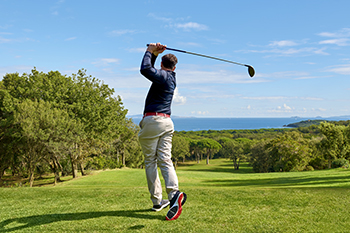

Blisters can form on different parts of the human body, such as the hands, and the feet are certainly no exception. Sometimes, certain activities that individuals engage in can potentially contribute to the development of blisters on the feet. For example, some golf players can develop blisters from their sport, which can be an annoyance. The reason for this is that golf shoes can sometimes create blisters when the heel rubs repeatedly up against the back of the heel of the shoe. The toes, in addition to the sides of the feet, are also susceptible to the development of blisters from golf shoes. If an individual is wearing a brand-new pair of golf shoes for the first time, it is also more likely that blisters will form. Since the formation of blisters on the feet can potentially make it more uncomfortable to engage in golf, many patients will seek out ways to remedy the situation. If you are a golf player with blisters, it is suggested to schedule an appointment with a podiatrist today who will help you treat your problem.
Blisters are prone to making everyday activities extremely uncomfortable. If your feet are hurting, contact Dr. Alan J. Spector of Shore Podiatry. Our doctor can provide the care you need to keep you pain-free and on your feet.
Foot Blisters
Foot blisters develop as a result of constantly wearing tight or ill-fitting footwear. This happens due to the constant rubbing from the shoe, which can often lead to pain.
What Are Foot Blisters?
A foot blister is a small fluid-filled pocket that forms on the upper-most layer of the skin. Blisters are filled with clear fluid and can lead to blood drainage or pus if the area becomes infected.
How Do Blisters Form?
Blisters on the feet are often the result of constant friction of skin and material, usually by shoe rubbing. Walking in sandals, boots, or shoes that don’t fit properly for long periods of time can result in a blister. Having consistent foot moisture and humidity can easily lead to blister formation.
Prevention & Treatment
It is important to properly care for the affected area in order to prevent infection and ease the pain. Do not lance the blister and use a Band-Aid to provide pain relief. Also, be sure to keep your feet dry and wear proper fitting shoes. If you see blood or pus in a blister, seek assistance from a podiatrist.
If you have any questions, please feel free to contact our office located in Point Pleasant, NJ . We offer the newest diagnostic and treatment technologies for all your foot care needs.